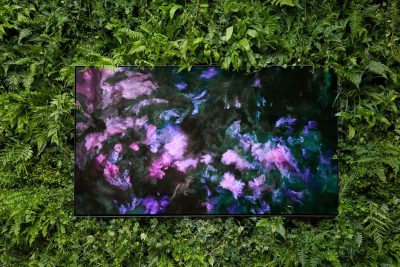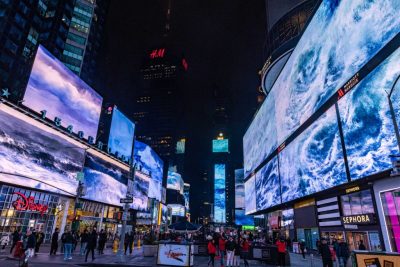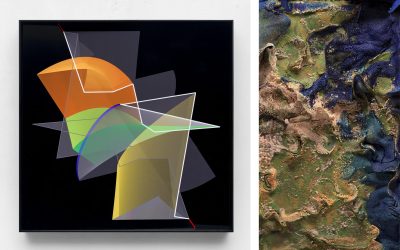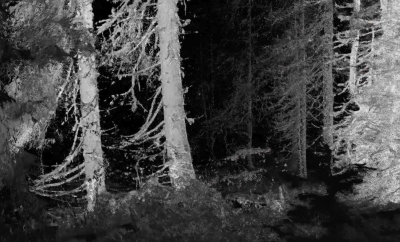bitforms gallery is pleased to announce its first solo exhibition by the London-based artist Quayola. On view will be two video installations, Strata #4 and Topologies, the second of which is a New York premiere.
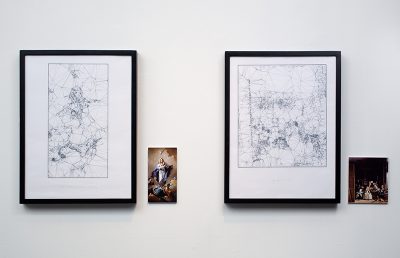

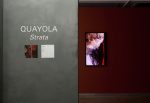

Quayola
Strata
May 11 – June 16, 2012
bitforms gallery is pleased to announce its first solo exhibition by the London-based artist Quayola. On view will be two video installations, Strata #4 and Topologies, the second of which is a New York premiere.
Regarded in Europe for his enigmatic video installations, Quayola creates hybrid spaces of animated painting and sculpture. Informed by his experiences growing up in Rome, and spiritually detaching from the city’s rich tradition in architecture, the work is rooted in geometry and the iconography of perfection.
Quayola’s installations dwell on the objective details of his subjects: light, form, shape and color. Glorious representations are built, as he temporally treats familiar symbols of the baroque and renaissance periods. Crafting a peculiar distance from his subjects, Quayola’s process wanders through the surface of an object, pushing beyond its picture plane.
In works such as Topologies the viewer is dislocated in time. Painted surfaces of two pieces in the Museo del Prado collection, Las Meninas (1656) by Velázquez and The Immaculate Conception (1767) by Tiepolo, transform into animated movement. Produced in high definition for a commission by the British Film Institute and onedotzero, this video installation interrupts our expectations of space, re-imagining the calculation behind such masterpieces.
The Topologies installation boldly challenges, yet still submits to, the art object’s myth of perfection and aura, hanging in a church or museum. Transporting this beauty into a virtual realm, Quayola rigorously investigates the surface details of each object. Pure geometry and abstraction take over, as he reframes his subjects using a computational method of triangulation. In the format of a diptych, Velázquez is positioned on the left and Tiepolo on the right. In each panel, hundreds of thousands of polygons and points comprise a wire frame core that mathematically contorts and regenerates, driven by a soundscape that visually is determined.
n speaking about the synaesthetic quality of his compositions, Kandinsky is a reference point that Quayola often cites. “Time is an inseparable quality of my primary experience with an object,” he says. “Also as I work, I start to become incredibly fascinated by the underlying shapes. Great paintings and architecture of the past are powerful icons of perfection and beauty. They are somehow, almost, things which couldn’t have been made by man.”
Original masterpieces and collections become raw canvas in Quayola’s work, as he anchors this exploration in a conversation about archives, collage, intellectual property and the appreciation of an object. In an age of the Google Art Project, which offers unprecedented access to the literal surface of a painting, Quayola handles the time we spend looking at art as a plastic artifact, something to be sculpted and suspended. The gaze is a place where the logic of a picture unfolds, seemingly excavated from beneath the image.
Especially in Strata series, Quayola locates this practice within the archaeological process of layering or stratification. Displayed on a 50” flat screen, Strata #4 was originally commissioned as a multi-channel immersive video-installation, which debuted in October 2011 at the Palais de Beaux Arts in Lille, France. The subjects of this work are four grand altarpieces by Anton Van Dyke and Peter Paul Ruebens in the museum’s Flemish collection: Van Dyck’s Christ on the Cross (1628) and Rubens’ Martyrdom of St. Catherine (1615), The Ecstasy of Mary Magdalene (1619) and The Descent from the Cross (1617).
“Strata #4 is a study of the relationship between classical figuration and abstraction,” says Quayola. “It is based on universal rules of beauty and perfection. The movement on-screen creates a dialog between two eras, two dimensions.”
The gallery exhibition also includes a selection of drawings. Related to Quayola’s process of geometric interpretations, they depict subjects appearing in the Strata #4 and Topologies video installations.
Concurrent and recent exhibitions featuring Quayola
Matter. Touring exhibition, featuring a special Audemars-Piguet commission celebrating the Royal Oak 40th anniversary. Dates this Fall in Beijing, Singapore and Dubai.
Jun 6-10, 2012: Palais de Tokyo, Paris
Mar 21-24, 2012: Park Avenue Armory, New York
Quayola – Topologies, Strata and Natures, curated by Paul Young.
March 19 – May 8, 2012: Young Projects Gallery, Los Angeles CA
In the Blink of An Eye – Media and Movement, group exhibition
March 8 – August 10, 2012: National Media Museum, Bradford UK
The Creator’s Project featuring Strata #4, Topologies and Natures
March 16-18, 2012: San Francisco
October 15-16, 2011: Brooklyn, New York
October 7-10, 2011: Seoul, Korea
July 29-31, 2011: São Paulo
June 9-11, 2011: Paris, France
Biography
Quayola (b. 1982, Rome) creates hybrid spaces of animated painting and sculpture. Regarded for his enigmatic video installations and based in the UK, he was trained at the University of the Arts London. Engaging a practice of audio-visual performance, drawing, photography and software programming, Quayola explores a fine boundary located between the real and artificial.
The very first solo exhibitions of Quayola’s work opened at bitforms gallery in May 2012 in New York and at Young Projects Gallery in March 2012 in Los Angeles. Past displays have included a 54th Venice Biennale project at the Italian Cultural Institute in London and group exhibitions at the Victoria & Albert Museum, London; the British Film Institute, London; Gaîté Lyrique, Paris; Palais des Beaux Arts, Lille; Grand Theatre, Bordeaux; Church of Saint Eustache, Paris; Forum des Image, Paris; Centro Cultural Recoleta, Buenos Aires; Park Avenue Armory, New York; EMPAC Centre, New York; Yota Space, St. Petersburg; MIS, São Paulo; Casa Franca, Rio de Janeiro; and BAC Center d’Art Contemporain, Geneva; as well as festivals such as Sonar, Barcelona; STRP, Eindoven; Cimatics, Brussels; onedotzero, London; Elekra, Montreal; and the Clermont Ferrand Film Festival, among others.
Download Press Release

